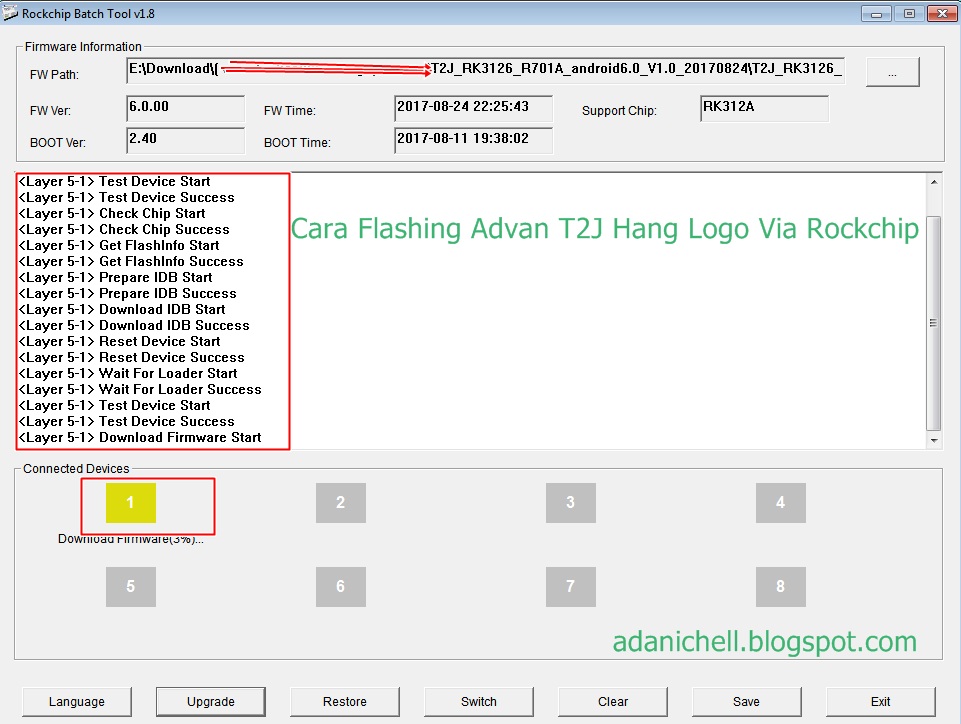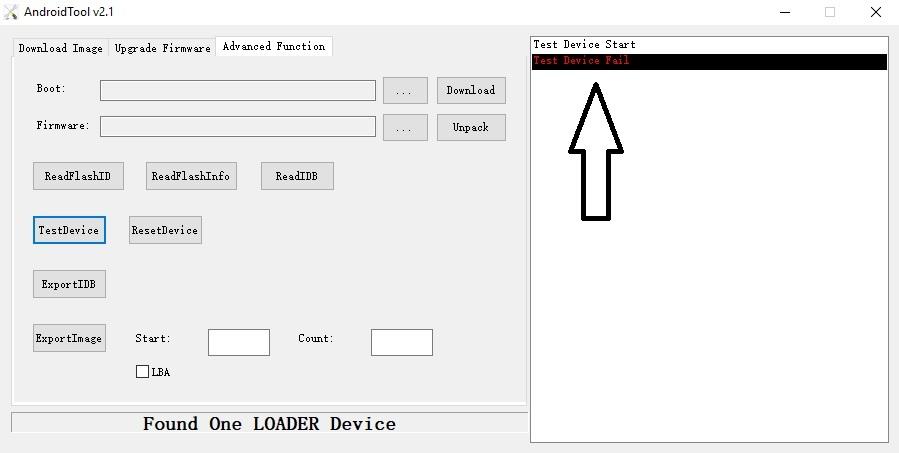IMPORTANT: users can perform further manipulations only at their own risk, and only if all other reflashing options can’t help.
After circuit and attaching to host PC, Android tool will show you message in progress bar: Found one maskrom device. Then start upgrade. The reflashing process should run several steps. You also can use Batch tool for this action. Device indication should turn blue instead of green for maskrom mode. Take A Sneak Peak At The Movies Coming Out This Week (8/12) Watching Zoolander With My Teenage Brother, 20 Years After Its Release; Watching ‘Dear Evan Hansen’ in a Movie Theater Near Me. Ok, so your device is recognized by Rockchip Batch Tool. Plese note that you must use the RESTORE option, not upgrade. Restore will delete all previous firmware and install a new clean one. As said, search for the lujji's Kitkat 4.4.4 thread. Since his firmware is KitKat, you should be able to install it. And it is the best firmware and the.
This option can help if your device got soft or hard bricked. If you want try to reflash your device for the first time please check THIS article
BEFORE START
What you need:
Image file
Host PC
USB OTG Cable

Supported host OS: Windows XP (32/64bit) Windows 7 (32/64bit) Windows 8 (32/64bit) Windows 10 (32/64bit)
The first thing you need is to download the archive with firmware. Inside archive, you find:

BatchTool or Android Tool - tool for reflashing
DriverAssitant - tool to install drivers and firmware image file
Firmware image
All actions before reflashing are the same with the
INSTALLING DRIVERS
Launch RK DriverAssitant and press “Install Driver”.
Apply all changes and warnings during installation until finishing message
CONNECTING TO PC in MASKROM MODE
Maskrom mode is reflashing way, when you block reading data from NAND using hardware short circuit of NAND pins.
1. Open device housing and detect NAND (is standalone chip with 48 pins on two sides) on PCBA. In some boxes you also need detached heatsink or cooler in order to reach NAND
2. Place PCBA in front of you so you can clearly read NAND’s name and board number
3. You should choose 6th-7th or 7th-8th pin from NAND bottom on the right side or 6th-7th or 7th-8th pin from first pin (first pin is marked on PCBA with a point or ) and circuit it during plugging to Host PC and powering on (check pin sequence for other devices very clearly)
Ugoos UM3 example
Ugoos UT3s example
Ugoos UT4 example
After circuit and attaching to host PC, Android tool will show you message in progress bar: Found one maskrom device.
Then start upgrade. The reflashing process should run several steps
You also can use Batch tool for this action. Device indication should turn blue instead of green for maskrom mode.
There are photos of several well spread NAND chips and circuit schemas:
Find us:
This is a common guide for reflashing RockChip based devices. All RK SoC (RK3066, RK3188, RK3288, RK3229, RK3328, RK3399 and so on) supports the same applications and drivers for Host system, if 3rd party producers do not add any other limitations or special options. Differences can be in hardware parts, so you need to detect OTG port and recovery buttons correctly.
Notice: this guide is 100% working with Ugoos RK devices.
BEFORE START
What do you need:
- Image file
- Host PC
- USB OTG Cable
- Supported host OS: Windows XP (32/64bit) Windows 7 (32/64bit) Windows 8 (32/64bit) Windows 10 (32/64bit)
The first thing you need is to download the archive with firmware. Inside archive, you find:
- BatchTool or Android Tool - tool for reflashing (separate Android Tool and drivers you can download HERE)
- DriverAssitant - tool to install drivers and firmware image file
- Firmware image
INSTALLING DRIVERS
Launch RK DriverAssitant and press “Install Driver”
Apply all changes and warnings during installation until finishing message
CONNECTING TO PC
Run Batch tool or Android tool on your host PC.
In order to connect device with Host PC and run bootloader mode you should perform following steps:
1. Plug off device power adaptor.
2. Connect device to computer via usb OTG port, much better to use certified OTG USB cable from package.
3. Run Batch tool or RK Android tool
4. Hold the hardware recovery button.
5. Plug in power adaptor and Turn on device if not turning on automatically.
Tip: if you can’t hold recovery button or it’s broken you can reboot to bootloader from Ugoos power menu.
RECOVERY BUTTONS AND OTG USB PORTS LOCATION ON UGOOS DEVICES YOU CAN SEE IN THE END OF THIS INSTRACTION.
IF YOU USE ANDROID TOOL:
In Android Tool choose “Upgrade Firmware” tab. If you did everything correctly and the RK driver installed properly on your computer, ANDROID TOOL shows you message “Found One Loader Device “
Click “Firmware” button and specify the path to the firmware file. You need to wait until the program download information about the firmware, then it will display report on the screen. Now click “Upgrade” button to start reflashing device. At the end, you will see a report indicating a successful operation.
For flashing dualboot or clear linux firmware (for example dualboot UT3/UT3s/UM3 firmwares)

Run Android Tool. If you did everything correctly and the RK driver installed properly on your computer, ANDROID TOOL shows you message “Found One Loader Device “ In Android Tool choose “Download Image” inset. Default program configured to flash 'clear' android on your device. If you want install “Dualboot” or “Clear Linux” click right mouse button by program window, and then select “Load config”.
3. Then choose one of configurations files:
config.cfg - if want flash only Android
config_dualboot.cfg - if want flash dualboot
config_linux.cfg - if want flash only linux
3. Now click the “Run” button to start reflashing device. At the end, you will see a report indicating a successful operation.
IF YOU USE BATCH TOOL:
Main difference between Android tool and Batch tool is Batch tool can reflash several devices at the same time (6 max).
Run the Rockchip Batch Tool and click on the “…” to choose file with firmware. If you did everything correctly and the driver is installed on your computer, you will see green light on one of the indicators.
Now click the “Upgrade” button to the firmware of the device. At the end, you will see a report indicating a successful operation.
OTG usb ports and recovery buttons on Ugoos devices:
Ugoos UT4/UT3+/UT6

Recovery button and USB OTG port is on the right side
Ugoos UT3/UT3s (old version)
Recovery button and USB OTG port is on the right side
Ugoos UM3/UM4
Recovery button is from the left to antenna connector
Test Device Fail Rockchip Batch Tool Free
OTG USB port is left one.
Ugoos UT5 Pro
Ugoos UM2
Ugoos UT2
Rockchip Batch Tool V1.8
Ugoos UT1
Rockchip Batch Tool 1.7
Find us: